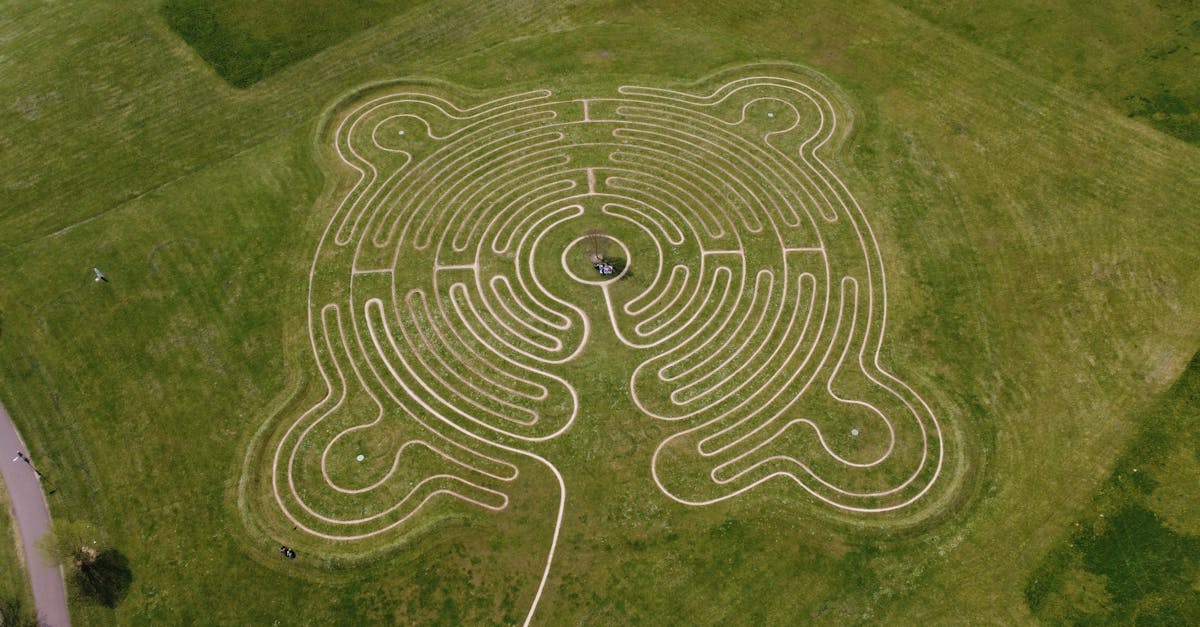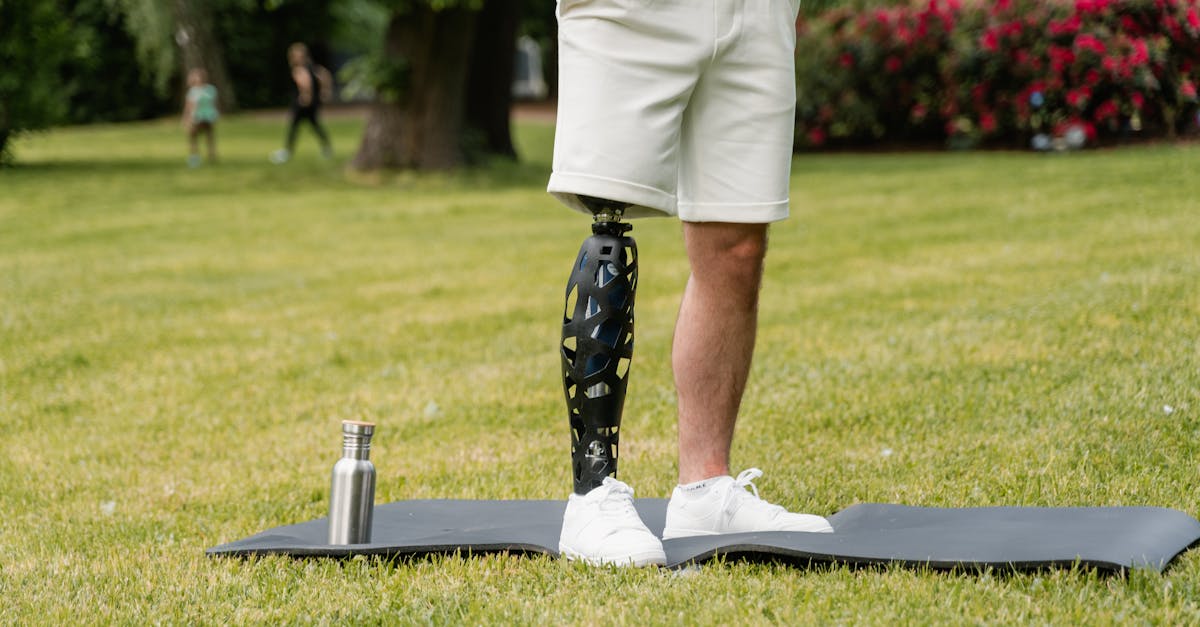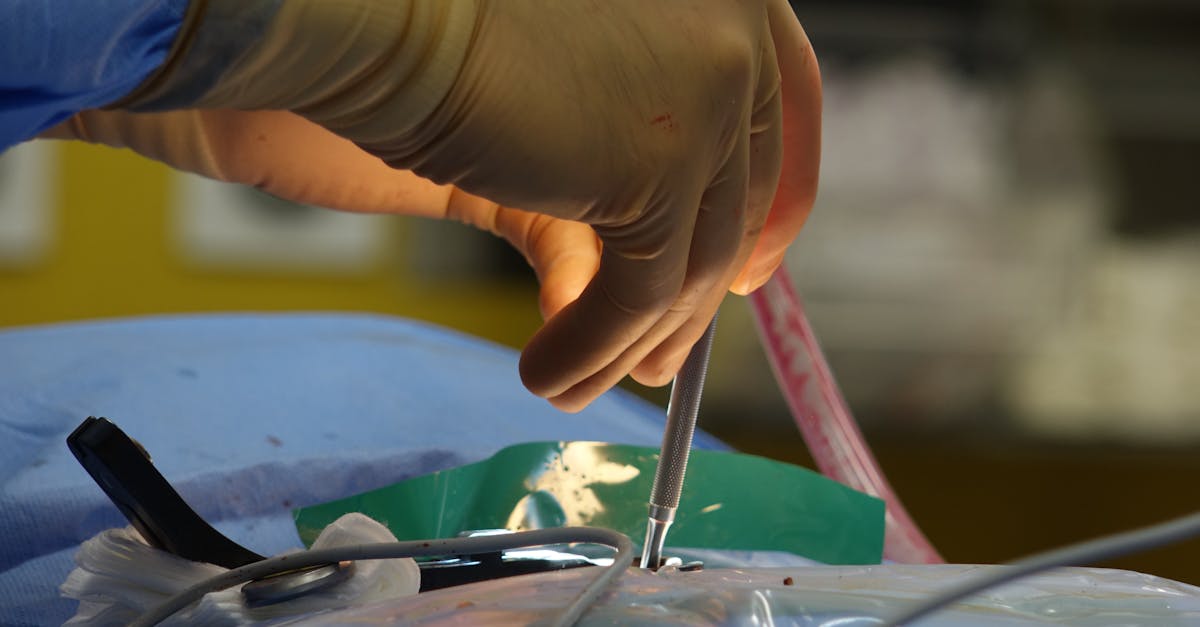|
In Short, labyrinthitis is an inflammation of the inner ear that can lead to debilitating symptoms such as fatigue and vertigo. Understanding this condition is crucial for managing its impact on daily life. The benefits of a proper treatment plan include alleviation of severe symptoms and improved quality of life. Treatment options often involve medications targeting inflammation and symptoms, allowing individuals to reclaim their health. By staying informed about labyrinthitis, patients can take proactive steps to tackle their challenges and enhance their well-being. |
Exploring Labyrinthitis and Its Connection to Fatigue delves into the intricacies of this inflammatory condition affecting the inner ear, which is known to disrupt balance and hearing. Characterized by debilitating symptoms such as dizziness, vertigo, and significant fatigue, understanding the connection between labyrinthitis and fatigue is crucial for effective treatment strategies. Treatment often involves a combination of rest, medications to relieve symptoms, and holistic approaches to enhance recovery.

Welcome to Pulse Align: Your Path to Natural Balance
At Pulse Align, we offer a non-invasive, innovative approach to wellness that embraces the body’s inherent ability to restore balance through gentle, imperceptible pulses. Our philosophy centers on promoting muscle tone symmetry, ultimately leading to improved posture and overall functionality. Many clients have experienced a noticeable reduction in muscle and joint tension, allowing them to feel more at ease in their daily lives.
Restoring Natural Balance
Unlike traditional methods that may focus solely on discomfort or specific conditions, Pulse Align uses a holistic approach to assist the body in recalibrating itself naturally. This process often results in enhanced overall comfort and postural balance. Clients often note an increased sense of well-being and ease, discovering new ways to engage in their daily routines as they feel lighter and more balanced.
A Personalized Wellness Journey
We pride ourselves on our client-centered approach at Pulse Align. Our dedicated practitioners work closely with each individual to create a personalized wellness journey. Clients have shared inspiring stories reflecting their experiences, particularly regarding improvements in neck and back tension, enhanced postural alignment, and a greater sense of wellness. This gentle, alternative method caters to clients of all ages, making it an ideal choice for families looking to promote collective well-being.
Discover Your Path to Wellness Today
We invite you to explore our services further and discover how Pulse Align can support the entire family on their journey towards improved wellness. Our clinics are conveniently located in cities including La Prairie, Mont-Royal, and Terrebonne. We encourage you to visit our website to learn more about our offerings and to book a consultation. Remember, while we complement your healthcare journey, it is essential to remain in the care of your healthcare team for any health-related concerns.
Embrace a Family-Friendly Wellness Solution
Pulse Align is proud to be a family-friendly provider suitable for all members of your household, including children and expectant mothers. Our approach promotes well-being for the whole family, and we believe everyone deserves to experience balance in their lives. Take the first step towards a healthier future—explore our site and book your appointment today!
Medical Disclaimer
The information and advice provided on this site do not replace the guidance and care of your healthcare professional. Pulse Align complements, but does not replace, medical care, and clients are encouraged to engage with their healthcare teams regarding their health and wellness journeys.
Exploring Labyrinthitis and Its Connection to Fatigue
- Symptoms: Persistent vertigo, dizziness, nausea, fatigue
- Causes: Viral or bacterial infections, autoimmune disorders
- Diagnosis: Medical evaluation and assessment of symptoms
- Treatment: Rest, antihistamines, gradual activity resumption
- Fatigue Management: Hydration, mindfulness techniques, nutrition
- Support: Psychological resources for managing anxiety
- Recovery: Gradual return to normalcy, prioritizing rest and care
- Holistic Approach: Integration of physical and emotional well-being strategies

Labyrinthitis is an inflammatory condition affecting the inner ear’s labyrinth, significantly impairing balance and hearing. Commonly presenting as vertigo, patients often experience debilitating symptoms, including dizziness and extreme fatigue. Understanding the intricate relationship between labyrinthitis and fatigue is crucial for effectively tackling both the physical and emotional challenges posed by this condition. This article delves into the symptoms of labyrinthitis, its treatment options, and the importance of a holistic approach in managing the effects of fatigue.
Understanding Labyrinthitis Symptoms
Labyrinthitis typically manifests through a range of symptoms that can vary in intensity. The most predominant symptom is vertigo, creating a spinning sensation that can severely hinder daily activities. Other common symptoms include dizziness, nausea, and hearing loss. However, one of the most concerning aspects of labyrinthitis is the profound sense of fatigue that often accompanies these symptoms. Chronic fatigue can further complicate an individual’s ability to navigate everyday life, intertwining with the psychological stress resulting from this disorder.
Causes of Labyrinthitis and Fatigue
Labyrinthitis is primarily caused by viral or bacterial infections that lead to inflammation within the inner ear. Upper respiratory infections and middle ear infections are frequent culprits. Additionally, conditions such as autoimmune disorders or allergic reactions can also contribute to the onset of labyrinthitis. This underlying inflammation affects the body’s balance system, often resulting in feelings of profound tiredness as the body struggles to adapt to its compromised state.
Treatment Options for Labyrinthitis
The treatment for labyrinthitis often centers around alleviating the debilitating symptoms and promoting recovery through various strategies. Initially, medications such as antihistamines and anti-nausea drugs can help relieve vertigo and nausea. In cases where a bacterial infection is present, antibiotics may be necessary. It is vital to prioritize rest during acute episodes, as physical activity can exacerbate dizziness and fatigue. The goal is to gradually resume normal activities while minimizing the risk of symptom recurrence.
At-Home Care Strategies
Individuals suffering from labyrinthitis can adopt various self-care strategies that complement traditional treatment options. Ensuring adequate hydration and maintaining a nutritionally balanced diet can bolster recovery. Additionally, engaging in mindfulness and stress-reduction techniques can mitigate the overall impact of fatigue. Simple lifestyle adjustments, such as avoiding sudden movements and bright lights, can also provide relief from symptoms.
Addressing Fatigue Holistically
Fatigue associated with labyrinthitis is both physical and emotional, necessitating a developed understanding of its implications. Patients are encouraged to engage in holistic practices that intertwine physical wellness with mental resilience. Regular light exercise, such as gentle walking or yoga, can improve overall well-being while promoting a supportive environment for recovery. Additionally, foster a strong support system, as sharing experiences and challenges with others can alleviate feelings of isolation that often accompany chronic conditions.
Consulting Healthcare Professionals
Lastly, collaborating with healthcare providers experienced in managing chronic disorders like labyrinthitis is essential. A comprehensive treatment plan that addresses both the physical and emotional dimensions of the condition can provide invaluable support. Professionals focusing on a holistic approach that incorporates neuromuscular health and nervous system recalibration can aid patients in reclaiming their vitality.
Fostering an understanding of labyrinthitis and addressing its connection to fatigue empowers individuals to take charge of their health. By embracing principles aligned with holistic wellness, patients can optimize their recovery journey and improve their overall quality of life.
| Aspect | Insights |
| Symptoms of Labyrinthitis | Dizziness, vertigo, hearing loss, fatigue |
| Connecting Fatigue | Fatigue can stem from the body’s response to ongoing vertigo and balance challenges |
| Holistic Wellness Approach | Emphasizes natural body recalibration, supporting overall well-being |
| Rest and Recovery | Adequate rest aids in managing fatigue and restoring energy |
| Nutritional Support | Balanced nutrition enhances energy levels and aids recovery |
| Stress Reduction Techniques | Practices like mindfulness can relieve psychological impact of fatigue |
| Gentle Movement | Engaging in gentle activities promotes muscle tone and body symmetry |
| Community Support | Encouragement from peer networks fosters emotional well-being and resilience |
| Awareness and Education | Understanding labyrinthitis helps in managing symptoms and emotional response |
| Complementary Wellness Services | Holistic services complement daily routines contributing to health balance |

The Wellness Journey: Discovering Balance Through Pulse Align
Clients from various regions, including La Prairie and Mont-Royal, have shared transformative testimonials about their experiences with Pulse Align’s unique approach to wellness. Many have reported significant improvements in managing their labyrinthitis and its associated fatigue, finding relief naturally without relying solely on medications.
In Châteauguay, for instance, one client highlighted how the gentle techniques employed by Pulse Align have helped restore their balance and alleviate the overwhelming sensations of dizziness. “I never realized how much my condition affected my daily life until I experienced the support from Pulse Align. The empathy shown and the strategies provided have truly enhanced my quality of life,” they expressed.
Another client from Sainte-Marie echoed similar sentiments, stating, “After starting my journey at Pulse Align, I felt an immediate difference in my body. My fatigue lessened, and I could finally engage in activities I once avoided, thanks to their commitment to supporting my health’s natural healing processes.” This perspective resonates deeply with many who have sought balance while navigating the challenges of labyrinthitis.
Those living in towns like Terrebonne and Deux-Montagnes have also reported positive outcomes. One individual remarked, “I was skeptical at first, but seeing the changes after just a few sessions convinced me. Pulse Align’s work has been integral in my journey toward wellness. It’s not just about treating symptoms; it’s about empowering the body to heal.” Their experiences reflect the holistic recovery pathway that Pulse Align embodies.
Clients in Chicoutimi and nearby areas have shared how the supportive community and tailored approaches at Pulse Align have played a crucial role in restoring their well-being. “It’s wonderful to find a facility that focuses on holistic health. The insights I gained about my condition and the personalized care made a true difference,” stated a satisfied client. These testimonials illustrate the growing recognition of Pulse Align as a trusted resource for those facing similar struggles.
By providing an environment that collaborates alongside healthcare teams, Pulse Align is committed to ensuring that both clients and their families feel supported throughout their wellness adventures. If you are exploring strategies to improve body function and regain balance, we invite you to visit our clinics and discover the impact of our services: Our Clinics.
Labyrinthitis is a complex medical condition that manifests as inflammation of the labyrinth, a crucial structure within the inner ear responsible for balance and hearing. The symptoms of labyrinthitis can be profound and debilitating, often including vertigo, dizziness, and significant fatigue. Understanding this condition, especially its connection to fatigue, is crucial for effective diagnosis and treatment.
One of the most notable symptoms associated with labyrinthitis is fatigue. Patients frequently report feelings of exhaustion that can severely impact their daily lives. This fatigue is not solely physical; it is often compounded by the mental toll of coping with dizziness and instability. As the body strives to maintain balance amidst the ongoing symptoms, the result is an overwhelming sense of tiredness. This interplay between labyrinthitis and fatigue underscores the importance of a holistic approach to treatment, addressing not just the physical but also the emotional facets of the condition.
The causes of labyrinthitis can vary but are primarily linked to infections, whether viral or bacterial, that lead to inflammation in the inner ear. In many cases, it arises following an upper respiratory infection or middle ear infection, making early diagnosis critical in managing symptoms and preventing the condition from worsening. The connection between labyrinthitis and fatigue therefore becomes even more significant, as individuals struggling with chronic fatigue may need to investigate an underlying ear condition contributing to their symptoms.
Effective treatment of labyrinthitis typically involves a multifaceted approach tailored to the individual’s specific symptoms and underlying causes. Medications such as antihistamines and anti-nausea drugs may be employed to alleviate vertigo and other related symptoms. Additionally, managing fatigue often requires implementing restorative practices, including adequate rest and hydration. A careful review of lifestyle factors can help in establishing a conducive environment for recovery. Patients are often encouraged to engage in gentle activities that promote relaxation, such as mindfulness techniques or light stretching, to combat stress and exhaustion.
In this context, healthcare professionals like Dr. Sylvain Desforges play a pivotal role in providing comprehensive care for patients suffering from labyrinthitis and its related symptoms. An expert in osteopathy, naturopathy, and manual medicine, Dr. Desforges is the founding president of TAGMED clinics and the ACMA association. With a career focused on healthcare innovation, he specializes in chronic pain management and the integration of advanced technologies such as spinal decompression, laser, and shockwave therapy.
Dr. Desforges’ mission revolves around optimizing his patients’ health through evidence-based care. By addressing the underlying causes of labyrinthitis and exploring treatment options that encompass both physical alleviations of symptoms and broader wellness strategies, he aims to enhance the quality of life for those affected. Within the context of his clinics in Montréal, Terrebonne, and Mont-Royal, patients can discover tailored solutions that cater to their unique health journeys.
Understanding the intricacies of labyrinthitis and its relationship to fatigue is essential for both patients and healthcare providers. By focusing on a treatment paradigm that embraces both physical and emotional facets of health, individuals can experience an improved trajectory in managing their symptoms. Grasping this connection allows for more effective strategies aimed not only at relief from debilitating symptoms but also at achieving a sense of balance and well-being.
As patients navigate their recovery journey, the support and expertise of healthcare professionals such as Dr. Desforges prove invaluable. Through such collaborations, individuals dealing with labyrinthitis can hope to reclaim their health and mitigate the pervasive fatigue that often accompanies this condition.
Neurovertebral Decompression Technology by TAGMED
Mechanism of Action
The neurovertebral decompression technique offered by TAGMED works by applying a controlled and progressive traction force on the spine. This method effectively creates additional space between the vertebrae, thereby reducing pressure on intervertebral discs and nerve roots. As a result, this enhanced space facilitates improved circulation of fluids within the targeted area, which is crucial for the healing processes. By promoting better circulation, this mechanism contributes significantly to decreasing inflammation and relieving pain.
Specific Benefits
This non-invasive method offers numerous advantages in alleviating chronic pain and the symptoms associated with conditions such as herniated discs, bulging discs, and moderate to severe spinal and foraminal stenosis. By relieving the pressure exerted on nerve structures and optimizing fluid circulation around the discs, TAGMED’s neurovertebral decompression therapy not only speeds up recovery but also enhances quality of life for a wide range of patients. Many individuals experience substantial relief from chronic discomfort, enabling them to engage more fully in their daily activities.
Comparison with Other Treatments
When compared to other common treatment modalities, the neurovertebral decompression therapy offered by TAGMED presents significant differences. Traditional painkillers, corticosteroid injections, surgical interventions, and conventional physiotherapy all have their respective risks and limitations. In contrast, the neurovertebral decompression technique highlights unique benefits such as the absence of invasive interventions, reduced risks associated with pharmacological treatments, and a typically faster recovery time. This makes it an attractive alternative for patients seeking effective solutions to manage their symptoms associated with conditions discussed in Exploring Labyrinthitis and Its Connection to Fatigue: Insights on Symptoms and Treatment Options.
Case Studies and Testimonials
Numerous patients have shared their success stories regarding TAGMED’s neurovertebral decompression therapy. For instance, individuals have reported enduring relief from their chronic pain levels, enabling them to return to their daily activities more quickly. Testimonials frequently highlight a noticeable reduction in their dependence on pharmacological interventions, illustrating the profound impact that this innovative approach has had on their overall well-being and functionality. Many who have undergone this therapy have expressed gratitude for the support received, emphasizing how the care provided at TAGMED has allowed them to reclaim their vitality and significantly improve their quality of life.
Labyrinthitis is a significant health concern that impacts countless individuals through its debilitating symptoms, most notably vertigo, dizziness, and extreme fatigue. The condition stems from inflammation in the labyrinth of the inner ear, which plays a crucial role in maintaining balance and hearing. By understanding labyrinthitis, patients can better comprehend how it disrupts their lives and impairs daily functioning.
Symptoms associated with labyrinthitis can be overwhelming and often lead to a downward spiral, where the fatigue caused by dizziness can intensify feelings of instability. Addressing this fatigue is essential, as it not only hampers physical activity but also affects emotional well-being. Recognizing the relationship between labyrinthitis and fatigue is vital for both patients and healthcare providers, as it highlights the necessity for an integrative approach to treatment.
Treatment for labyrinthitis usually involves a combination of medications such as antihistamines, lifestyle adjustments, and rest, focusing on alleviating symptoms while promoting healing. Patients often require tailored treatment strategies that address their unique experiences and conditions. Simple measures such as hydration, rest, and gradual activity resumption can play a critical role in the recovery process, helping individuals reclaim their health and improve their quality of life.
Beyond medical interventions, psychological support systems and community resources are equally important in helping individuals manage the emotional toll of labyrinthitis. By understanding this condition and its multifaceted effects on health, patients can engage in a more comprehensive recovery process, allowing them to take proactive steps toward reclaiming their vitality and restoring their sense of balance.

Do you suffer from a chronic condition that responds little or not at all to conservative treatments?
Exploring the nuances of discomfort and imbalance can be overwhelming, but at Pulse Align, we embrace innovative, non-invasive methods designed to help restore the body’s natural balance and posture through gentle, imperceptible pulses. This approach aims to relieve muscle and joint tension, allowing clients to experience a new level of well-being. As we delve into insights about labyrinthitis and its connection to fatigue, it’s essential to understand how our philosophy aligns with promoting natural recovery.
At Pulse Align, our focus is not directly on discomfort or specific conditions; rather, we facilitate an environment where the body can recalibrate itself naturally. Clients have reported amazing improvements and heightened comfort, often noting enhanced posture as a result of our gentle approach. This recalibration process allows the body to function more harmoniously, fostering a sense of relief and balance that aligns perfectly with holistic well-being.
Each client’s journey is unique, and our personalized approach at Pulse Align is paramount to your wellness experience. Many individuals have shared how they have experienced notable improvements in neck tension, enhanced balance, and a reduction in discomfort. Clients from various backgrounds have expressed gratitude for the positive changes they feel, citing an increased sense of vitality and overall wellness. By focusing on symmetry in muscle tone, we empower our clients to reconnect with their bodies and reclaim a state of balance and harmony.
We invite you to explore Pulse Align’s offerings further by visiting our website to discover nearby locations, including La Prairie, Mont-Royal, and Terrebonne. Clients can effortlessly book consultations for themselves or their families, ensuring that they receive the care they deserve. Remember, Pulse Align is designed to complement your existing healthcare services, working alongside your wellness journey while prioritizing your safety and comfort. Experience a safe, non-invasive, and family-friendly approach to wellness with Pulse Align.
To learn more about our services and book an appointment, visit our website: Pulse Align.
Frequently Asked Questions
Vértigo
Can diabetes cause vertigo?
Low blood sugar can cause dizziness, but that’s not true vertigo.
¿Cuál es la diferencia entre un vértigo y un mareo?
El vértigo implica una sensación de giro, mientras que el mareo es una sensación de debilidad o aturdimiento sin sensación rotatoria.
Does dehydration cause vertigo?
Yes, low hydration reduces blood pressure, potentially causing dizziness.
¿Los problemas visuales pueden causar vértigo?
Una visión borrosa, diferencias de corrección entre los ojos o problemas de coordinación visual pueden dar sensación de inestabilidad.
Une opération chirurgicale est-elle nécessaire ?
Rarement, pour certaines causes (par exemple, la décompression d’un canal semi-circulaire). La plupart des vertiges se traitent sans chirurgie.
Qu’est-ce qu’un vertige ?
Le vertige est une sensation de mouvement ou de rotation de l’environnement, entraînant une perte d’équilibre.
¿Los medicamentos antihipertensivos causan vértigo?
Algunos antihipertensivos bajan la presión, provocando mareos al incorporarse.
Can medications relieve vertigo?
Some medications (anti-vertigo or anti-nausea drugs) may help, but treating the underlying cause is essential.
¿Las migrañas pueden provocar vértigo?
Sí, la migraña vestibular es una forma de migraña con vértigos y otros síntomas vestibulares.
La tension musculaire dans la nuque peut-elle causer des vertiges ?
Une tension extrême peut influencer la circulation sanguine et la posture, participant à une sensation de vertige.
Zoé Rousseau believes that knowledge is the most powerful step toward healing—and she’s here to illuminate the path forward for anyone facing the challenges of vertigo. At Pulse Align, Zoé not only highlights the latest breakthroughs in neuromodulation and non-invasive health technologies but also translates complex research into practical, everyday guidance. Her approach is grounded in empathy and fueled by a genuine drive to help readers find balance, both literally and figuratively. From exploring advanced treatments to sharing firsthand patient stories, Zoé’s heartfelt advocacy ensures that no one has to face the spinning world of vertigo alone.
Medical Disclaimer
The information and advice provided on this site do not replace the advice, diagnosis, or treatment of a healthcare professional. Please note that the author of this article is neither a doctor nor a specialist in a medical specialty as defined by the Collège des médecins du Québec. Manual medicine, functional medicine, and sports medicine as described on this site exclude any medical treatment or diagnosis made by a doctor or medical specialist. Always consult your doctor for any medical questions. For more details, please read our complete Legal Notice.




